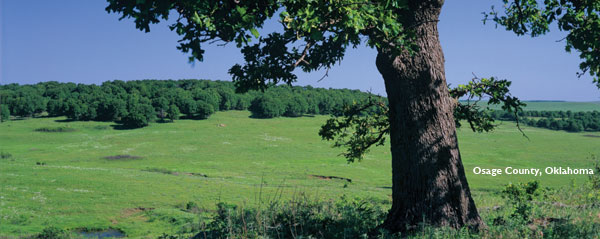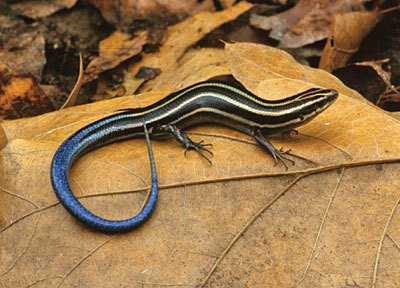|
back Home Cross TimbersGateway from forest to prairie Biodiversity of Oklahoma series |
|
Five-lined Skink
Plestiodon fasciatus
| Family: Scincidae Five-lined Skinks are small to medium-sized lizards with smooth, glass-like scales, well-developed limbs, and a tail that is slightly longer than the body. They closely resemble the larger Broad-headed Skinks in coloration and overall morphology. Juveniles are black with five distinct white stripes extending from the head to the first one-third of the tail. The stripes become less well defined as the skinks age, with the background coloration fading to brown or tan. Five-lined Skinks are strictly diurnal and are usually associated with hardwood forests. Juveniles can be active on sunny days as early as March, but most activity of adults and juveniles occurs from April through November, depending on local climatic conditions. Mating occurs from May through June. During the mating season, heads of males turn bright red or orange as a result of hormonal changes associated with breeding. Five-lined Skinks feed primarily on small insects and spiders. Similar to other skinks, Five-lined Skinks use chemical cues to determine sex and reproductive status during social interactions and to discriminate prey. They avoid insects that produce chemicals for defense, such as many ants and beetles. The brightly colored tails of juveniles are easily lost. Juveniles often flick the tail around when they bury their heads in leaf litter searching for prey. This behavior appears to distract birds and other potential predators away from the skink’s body and to the tail. Juveniles can regenerate their tails in about five weeks. When Five-lined Skinks reach sexual maturity, the tails lose their brilliant blue coloration and they are not as easily lost. From the Reptiles and Amphibians of Oklahoma's WMAs by Laurie Vitt. |
|
|
back to species list |
PDF of all species profiles
|

